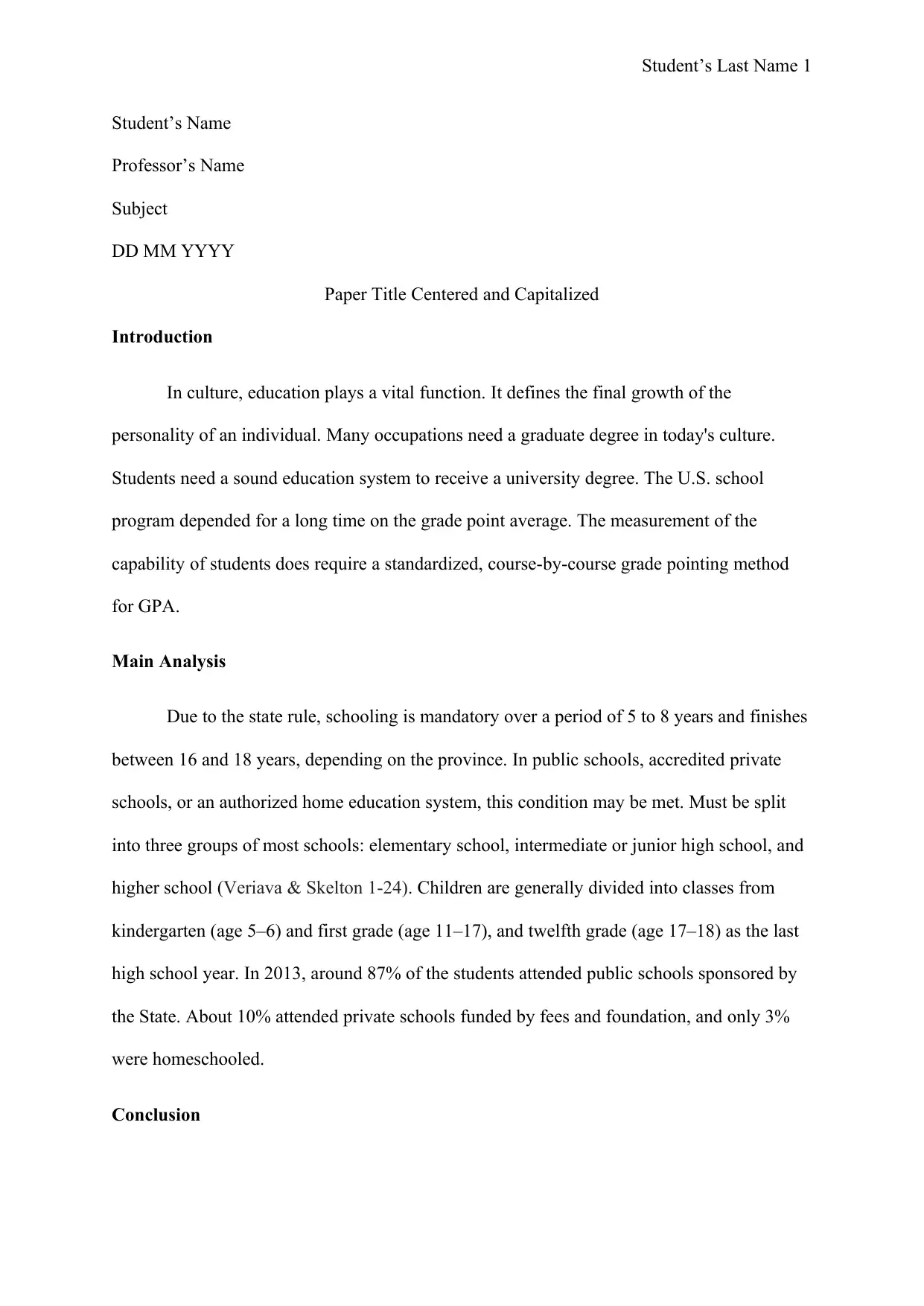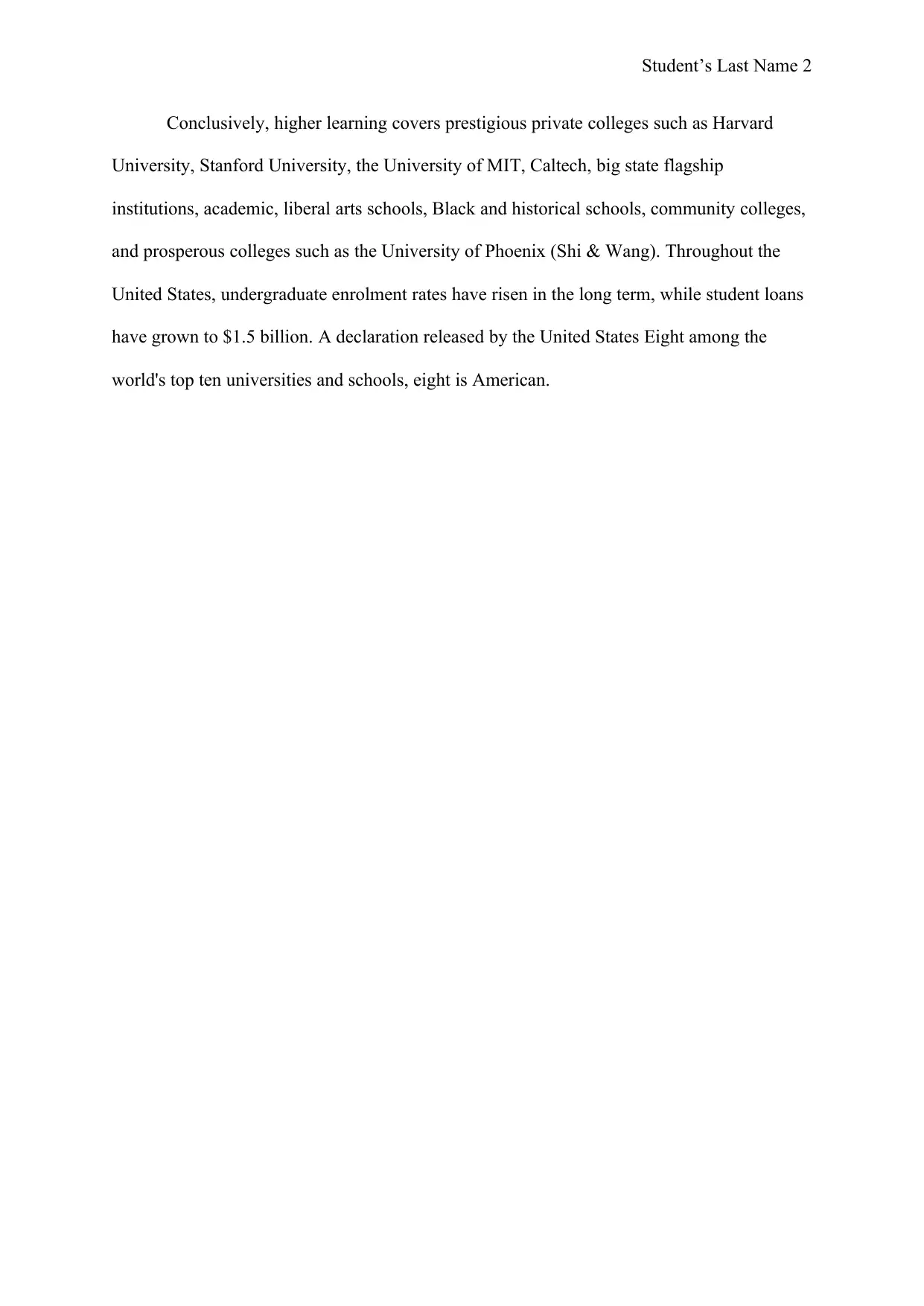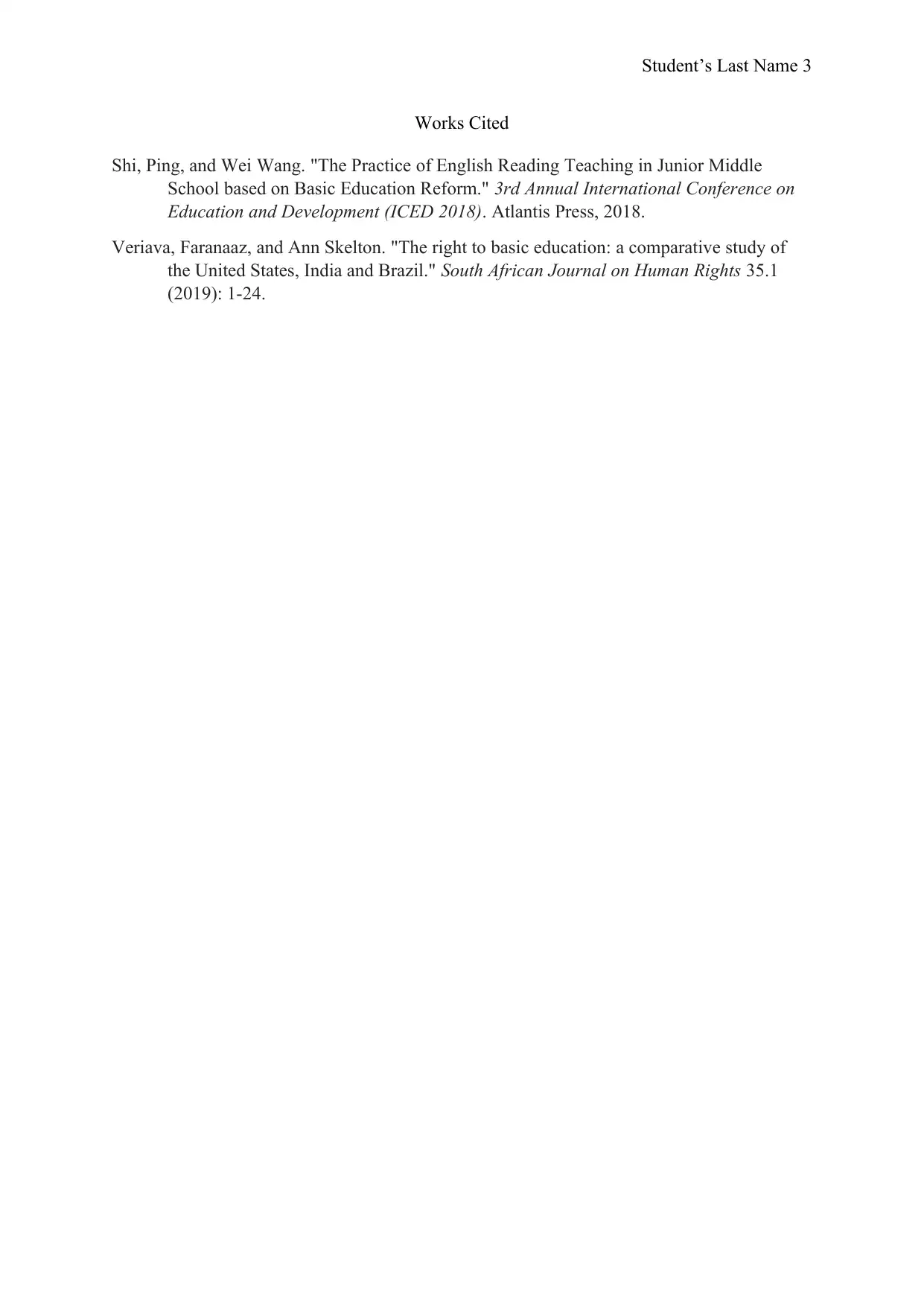Comprehensive Analysis of the US Education System: Report
VerifiedAdded on 2022/09/25
|3
|446
|19
Report
AI Summary
This report provides a comprehensive analysis of the US education system. It begins by highlighting the importance of education in modern society, emphasizing the need for a strong education system to prepare students for higher education. The report delves into the structure of the US education system, including the division of schools into elementary, intermediate, and high school levels, and the role of standardized testing. It examines the different types of schools, including public, private, and home-schooling, and their respective enrollment rates. The report also touches upon the landscape of higher education, mentioning prestigious universities and the rising trends in undergraduate enrollment and student loans. It also references the ranking of US universities in the world.
1 out of 3









![[object Object]](/_next/static/media/star-bottom.7253800d.svg)